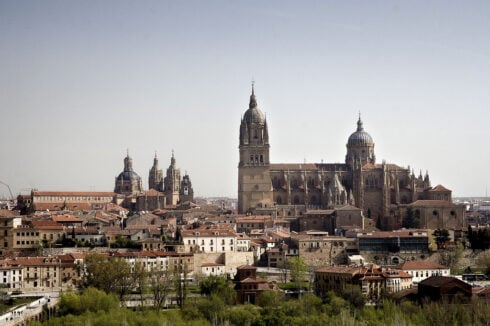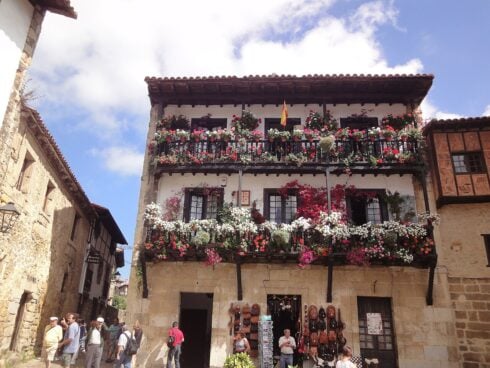LOOKING for an autumn getaway? Check out these four lesser-known walking routes for a stunning holiday.
The mild temperatures, frequent sunshine and stunning landscapes of autumnal Spain make this the perfect time to explore the country by foot.

From the verdant hills of Galicia to the dramatic coastlines of the south and the tropical landscapes of the Canary Islands, there’s a route to suit everyone.
Beyond the famous Camino de Santiago, we’ve revealed the best walking routes Spain has to offer.
The Gran Canaria Walking Festival
When people think of Gran Canaria they often think of holiday resorts and drunken tourism, but the island has so much more to offer.
Charming villages, extraordinary volcanoes, lush forests and rolling fields, Gran Canaria is a walker’s paradise.

Photo: Gran Canaria Walking Festival
This year, from October 24-27, the island will become a hiking hub for the Gran Canaria Walking Festival.
Four routes will guide visitors around the natural landscapes of the island so you can get to know its culture, history and gastronomy alongside expert guides.
‘Under the shelter of Doramas’ will take walkers through the magical laurel forests of the Parque Rural de Doramas’ before arriving at the traditional town of Fontanales.
‘The Peak of the navigators’ is a more challenging route starting from the highest point of the island, snaking through two protected natural areas, the Paisaje Protegido de Las Cumbres and the Reserva Natural Especial de los Marteles. The route takes five and a half hours to complete and is 11.6km in length, so a great choice for avid hikers.
‘The Road to the top’ starts in the village of Tejeda the ‘caldera de Tejeda’, where hikers can learn of the legacy of the volcanic activity of Gran Canaria.
After the hike, visitors reach the summit and, if the weather is favourable, they are able to enjoy a view across to Tenerife.
Another great option for hikers in Spain is the Camino de Levante, a quieter pilgrimage through the region of Murcia.

Photo: Lotus
The Camino follows the River Segura and passes through fields and orchards on a 120km route to Caravaca.
Along the route, there are inspiring stops, from the local churches including the Nuestra Señora de la Consolacion, to Roman remains, such as the Roman Villa of Los Villaricos, a large agricultural villa in the heart of Murcia.
Following the Northwest greenways, walkers will arrive at Bullas, the land of vineyards and wine, to sample the local flavours and visit the Museo del Vino (Wine Museum).
The last stage of the route will pass through an old railway line before arriving at the Taibilla canal, exploring the pine forests and vineyards, before arriving at their final destination: Caravaca de la Cruz, to see the Basílica-Santuario de la Vera Cruz.

According to Christians, the Holy Cross of Caravaca, contains a fragment of the Lignum Crucis; that is, the cross on which Jesus Christ died.
Widely regarded as one of the most challenging routes in Europe, Tenerife’s Route 040 will soon celebrate its fifth birthday.

Photo: Route 040
The elevation gain during the hike is what makes it so demanding but it is nonetheless used frequently by both hikers and runners.
Its 27.7km path runs from El Socorro beach to the summit of Mount Teide.
Although tough, this two day hike promises spectacular viewpoints, volcanic beaches and evergreen lined clifftops.
The Guadalhorce Green Corridor
At the start of 2024, a new four-kilometre section of The Guadalhorce Green Corridor hiking route was launched that passes through the town of Pizarra, Malaga.
This new path is the third section completed as part of the Green Corridor project, which aims to connect significant areas in the Guadalhorce region using natural trails.
The other sections include a pedestrian walkway over the river of Álora and the development of a 12.5-kilometre riverside path in Coin.
Previously, walkers had travelled between the towns of Pizarra and Vega Hipolito by walking on the road, so this route has been established to provide hikers with a safer journey between the two towns.
Along the way, visitors can admire the Guadalhorce River Estuary Natural Park, the historic Azud de Aljaima bridge and the Riparian forests.
Click here to read more Olive Press Travel News from The Olive Press.









